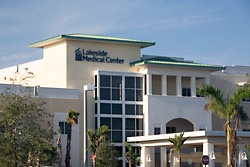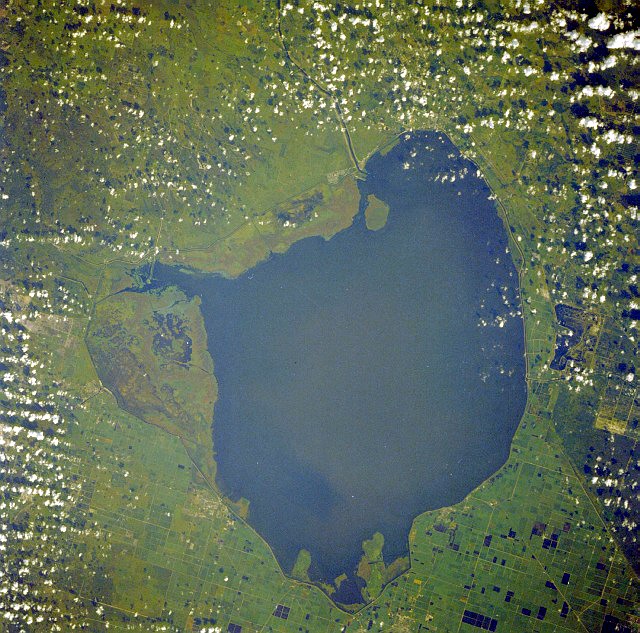
For a short time, the rate, in this area, it seems, was among the highest — and in at least one brief stretch may have been the highest — in the world, the expert, a doctor, was quoted as saying.
During May, a county commissioner whose district includes communities on the shore (known as “the Glades”) told her colleagues that forty percent of those who have gone for testing to Lakeside Medical (in a town near the lake called Belle Glade) had shown positive.
The rate, at least countywide, has since fallen. And much of the tribulation is simply due to the lack of education and poverty in the area. Those with the virus tend to show up at the hospital only after they are very ill, and many leave before they are supposed to. Social distancing has been a challenge. And the hospital lacks certain isolation capabilities.
But this is the area, specifically Belle Glade, that was also a hotspot — the hotspot — for Acquired Immunity Deficiency Syndrome when that pandemic was at its peak years ago. In 1985 the Orlando Sentinel reported that “the rural South Florida farming town of Belle Glade has the highest rate of AIDS in the world, and mosquitoes, sewage, and squalor could be part of the reason, a Miami medical researcher said. The deadly disease that destroys the body’s immune system has struck 37 of Belle Glade’s 20,000 residents, or about 1 in 600 residents, said Dr. Caroline MacLeod, director of the Institute of Tropical Medicine in Miami. ‘That’s the highest rate in the world, higher than New York, San Francisco, Miami or Los Angeles,’ she said.” So Belle Glade was a little “ground zero” in two of modern history’s most notorious pandemics.


That’s certainly possible, even the likelihood. But we always survey the spiritual landscape as well as the geophysical/meteorological/epidemiological topography, and when one does, one spots certain more bizarre peculiarities.
According to the book Weird Florida:
“Prior to 1910, early pioneers reported seeing human skeletons in the shallows around the southern end of the huge lake. Several old fishermen told of ‘catchin’ human skulls’ in their nets. One early settler claimed that there were so many skulls in the shallows that ‘during low water, it looked like a pumpkin patch.’ A surveyor clearing land on Grassy Island in the early 1900s, exposed more than fifty human skeletons that were covered only with a couple of inches of sand.
“Bones of both adults and children were scattered all over the lake bottom. The first theory that comes to mind is that these were victims of one of Okeechobee’s terrible hurricanes. If so, then it would have been an ancient hurricane, because the dead from the 1926 and ’28 hurricanes were recovered and buried in mass graves on the mainland. Prior to 1900, only a few people lived around Lake Okeechobee, which would rule out any mass casualties from floods or storms and certainly not enough to account for the estimated thousands of mysterious bodies on Okeechobee’s bottom.
“Some researchers have looked to the Seminole war for answers to this mystery. However, the only local skirmish was the 1837 Battle of Okeechobee on the north end of the lake, which resulted in only thirty dead. Historians have found no early Spanish connections to the mystery and believe that the bones may pre-date the first Spanish period by thousands of years. Some speculate the skeletons may have been residents of an ancient Indian village devastated by tribal warfare or disease. This would certainly account for the presence of both adult and children’s remains. But if this is the case, then what explains the total absence of artifacts and pottery?
“In my conversations with anthropologists and historians, it seems that no one can really explain what the bones are doing in Lake Okeechobee although some think it is a huge underwater burial site. Perhaps the big lake was seen as a spiritual place by some ancient culture and a good place to bury the dead. According to one legend, in February 1841, two-hundred Seminoles, rather than to be captured by the army, committed mass suicide.
“However, the story goes on to say that a medicine man put a hex on the area, which has since been known as the ‘Curse of the Everglades.’ A story appeared in a supermarket tabloid a few years ago that claimed the curse was responsible for two major aircraft crashes in the area, the 1972 Tristar Flight 401 tragedy and the 1996 Flight 592 crash. The Seminole Tribe of Florida responded that the tabloid had tried to create a myth and the story was ‘Ho-lash-ko-an.’ If my Seminole translation is correct, I believe that means something like “a bunch of hogwash.”
We’ll let you be the judge.
[resources: Weird Florida and Lying Wonders, Strangest Things]
[There are also miracles, in a church near the shore: see here]
copyright, Spirit Daily
https://www.spiritdaily.org/Sign_Wonders/pahokee.htm



